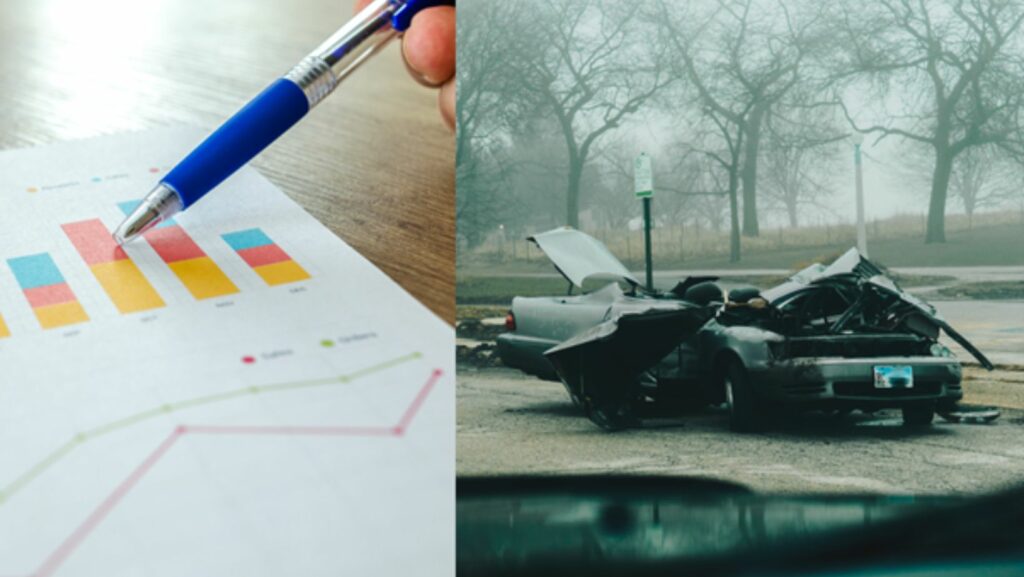
5 Things the Authorities Can Learn from Car Accident Statistics
Every year, several individuals lose their lives, and others sustain serious injuries due to car accidents, which is a terrifying truth. The aftermath is more destructive than those involved, as it touches on wider aspects like families, societies, and the entire economy.
Luckily, those who examine car accident statistics can gain beneficial knowledge for the purpose of identifying trends, figuring out causes, and implementing measures that are effective in improving road safety. Careful analysis of the statistics reveals important information that can be used by authorities to prevent similar incidences in the future as well as make roads safer for everyone.
Identifying High-Risk Areas and Times
High-risk areas and times can be identified through car accident statistics, which is one important lesson that officials can learn. Those figures are able to pinpoint the exact places, like intersections or long stretches, where accidents will most likely happen, and even residential areas.
Furthermore, it is possible for them to find specific days of the week or hours within which there are increased chances of vehicle crashes. This information can help them effectively utilize their resources by ensuring that more police officers are patrolling such locations with strict measures through traffic reduction as well as installing more signs along roads, among other things. Touching these areas could lead to a decrease in accidents, which may prevent many people from dying too soon.
Understanding the Role of Impaired Driving
As a significant causal factor in car crashes, impaired driving should be addressed. By examining car accident data, it is possible to gain some insight into how widespread impaired driving is and how it influences accident levels. This analysis can help governments design education programs, support enforcement activities, and partner with other parties to make people realize that drunk driving is a major cause of road traffic accidents.

To discourage this reckless behavior and thus minimize the number of accidents caused by impaired drivers, we can introduce targeted campaigns and more stringent laws.
Addressing Distracted Driving Concerns
Distracted driving is a serious safety issue in the present internet era. Accident statistics in cars could manifest the extent to which this problem has spread, and its results. Drivers sending texts or using mobile phones and those doing other activities that take away their attention while driving are highly dangerous.
This data can be used by the authorities to warrant stricter laws, raise awareness among the public and find technological solutions to discourage distracted driving. When such an approach is taken, it becomes possible for the authorities to foster a culture where drivers pay attention while still being accountable.
Improving Vehicle Safety Standards
Car accident data is useful for understanding how well various car models are performing as well as the effectiveness of different car safety features. Through this analysis, manufacturers, together with relevant regulatory authorities, can come up with comprehensive vehicle safety standards, which will encourage companies to become more innovative on driving-support systems while also producing safe cars.

As a result of collaboration, cars can be developed that are better designed and produced so as to assure the safety of people when accidents occur, thereby decreasing the seriousness of damages and preventing the loss of lives.
Enhancing Driver Education and Training
Data on car crashes may expose various regularities in terms of drivers’ age, background, and manner of driving. This kind of information aids those in charge when coming up with driver education and instruction courses that are more holistic and focused.
To make road travel safer, drivers should be taught the knowledge and skills that come with it. This can include looking at general driving mistakes as well as identifying particular age groups.
Conclusion
Road safety can be improved through the analysis of car crash statistics since they contain useful information that enables decision-making and strategic planning to prevent the occurrence of accidents again. In these data sets, authorities can locate areas where accidents are more likely to occur; highlights can also be made on factors contributing to this condition, like drinking while driving or using cell phones while driving, so that relevant measures are put in place (involving safety mechanisms in vehicles or training drivers).
By making use of the insights from car accident statistics, authorities are urged to aim for safer roads and greatly lessen the shattering effect of these tragic occurrences on people, families, and societies. The use of data that supports decisions and the practical application of findings can, at the end of it all, prevent numerous deaths and make all the roads safer.





